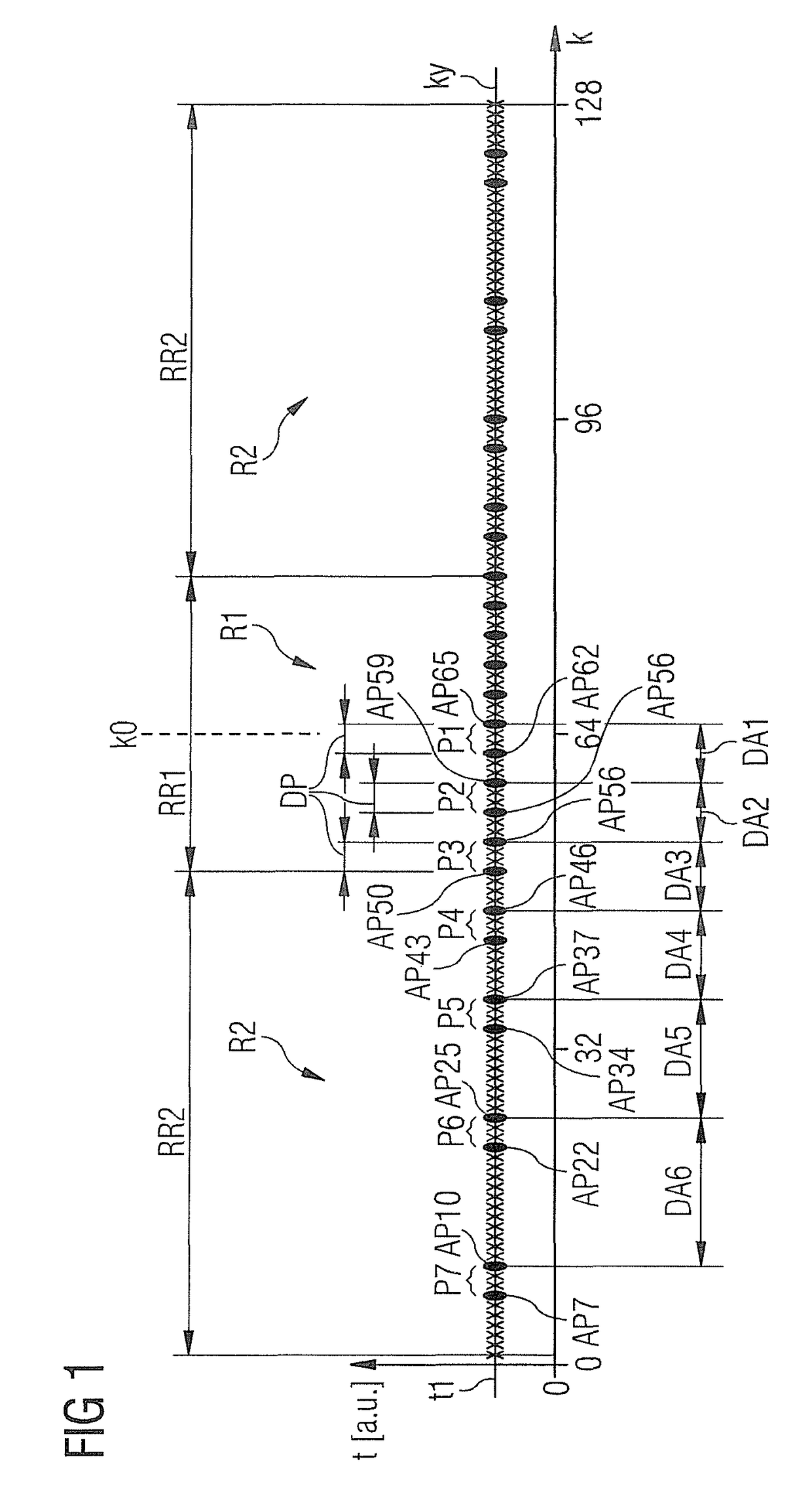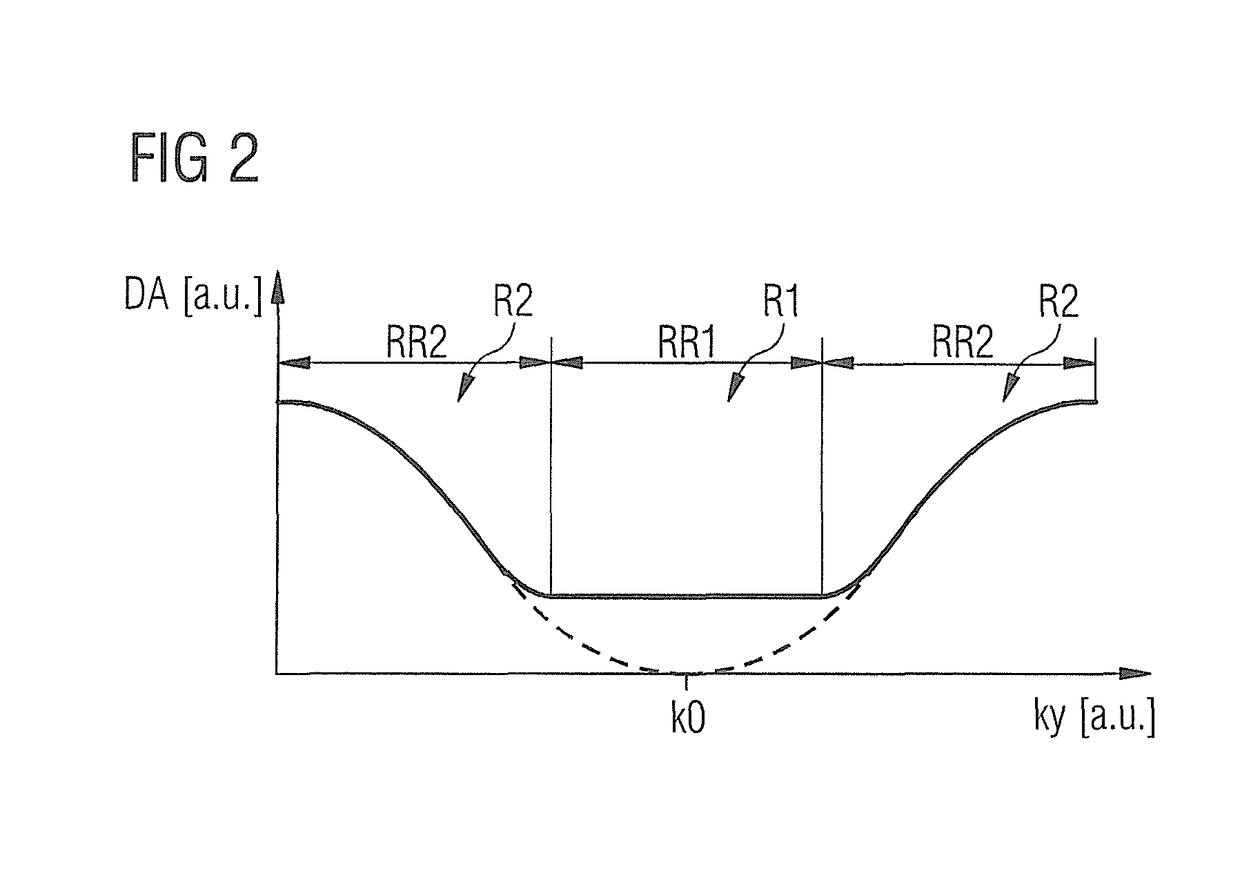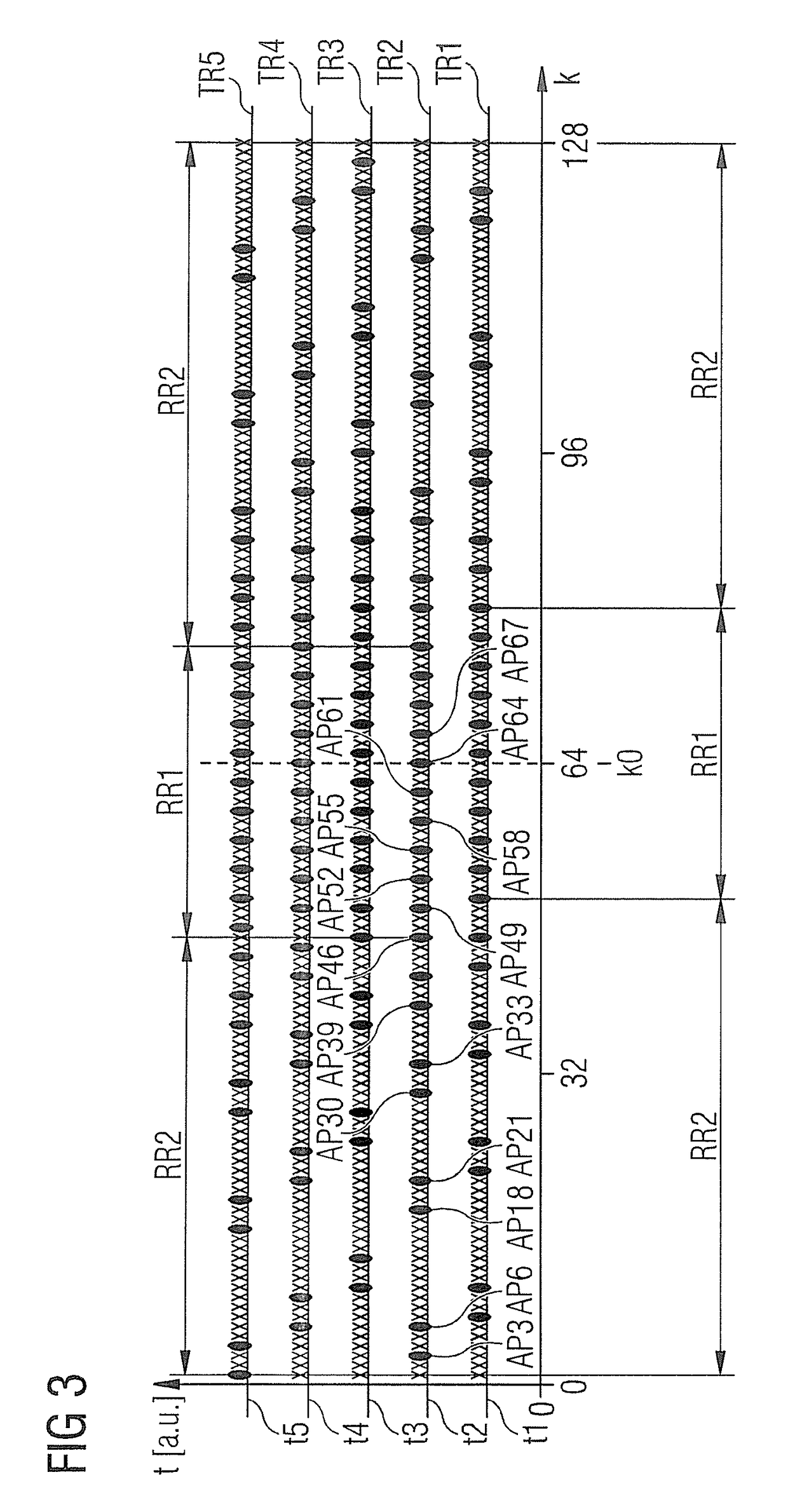Controlling a magnetic resonance imaging system to generate magnetic resonance image data of an examination subject
a magnetic resonance imaging and image data technology, applied in the direction of magnetic measurement, measurement using nmr, instruments, etc., can solve the problem that the minimum time between sampling events that results from adherence to a strict nyquist-shannon sampling rate can, in certain situations, be severely limited, and achieve the effect of quick implementation
- Summary
- Abstract
- Description
- Claims
- Application Information
AI Technical Summary
Benefits of technology
Problems solved by technology
Method used
Image
Examples
Embodiment Construction
[0046]FIG. 1 shows a readout axis ky that proceeds in k-space orthogonally to a trajectory for sampling of k-space to acquire raw magnetic resonance data of an examination subject. In this, as in all further exemplary embodiments, magnetic resonance signals should be acquired according to a bSSFP method.
[0047]As is apparent in contribution with FIG. 5, the examination subject O is situated in the measurement space 8 of a magnetic resonance imaging system 1 to acquire raw magnetic resonance data RD. The spatial coding of the raw magnetic resonance data RD ensues as is typical in k-space, which is associated with spatial regions of the examination subject O (and therefore of the measurement space 8) via a Fourier transformation.
[0048]FIG. 1 shows the chronological order of the sampling of k-space along a readout axis ky. The readout axis ky proceeds parallel to the ky-direction of k-space, i.e. parallel to the frequency coding direction. As previously noted, the raw magnetic resonance...
PUM
 Login to View More
Login to View More Abstract
Description
Claims
Application Information
 Login to View More
Login to View More - R&D
- Intellectual Property
- Life Sciences
- Materials
- Tech Scout
- Unparalleled Data Quality
- Higher Quality Content
- 60% Fewer Hallucinations
Browse by: Latest US Patents, China's latest patents, Technical Efficacy Thesaurus, Application Domain, Technology Topic, Popular Technical Reports.
© 2025 PatSnap. All rights reserved.Legal|Privacy policy|Modern Slavery Act Transparency Statement|Sitemap|About US| Contact US: help@patsnap.com



